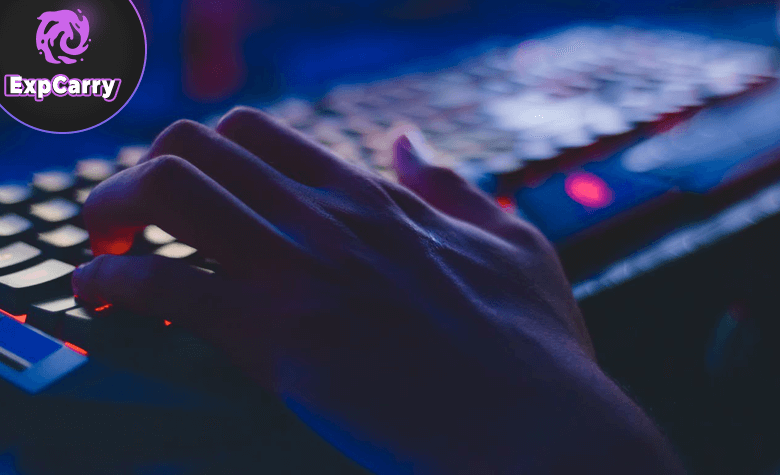What Esports Can Learn from NFL Playcalling: Strategy, Meta, and Counterplay

At first glance, esports and the NFL seem like two very distant worlds apart. One involves PCs or consoles, pads, RGB lights, mechanical keyboards, and the other involves pads, cleats, and actual running.
But if you look closely, there are some differences, particularly in the NFL’s playcalling system.
No other sport does in-game chess matches quite like the NFL. From last-minute audibles to perfectly timed trick plays, NFL coaches are on the line cooking the next tactics. So, what can esports teams, coaches, and players learn from them? Well, it turns out, quite a lot.
Let’s break it down.
The Playbook
If you are new to football, you have to know that the playbook is sacred. This isn’t just a bunch of drawings and arrows. It’s the brain of the team, and the strategy that will help them get the win. Coaches spend hours crafting plays designed to exploit weaknesses, adapt to opponents, and control tempo.
We have teams like Kansas City Chiefs and the Lions or Vikings, who don’t just win because of raw talent. That’s why they managed to get around 15 wins and only 2 losses. They are also one of the most popular teams to bet on in the NFL, especially in Michigan. After all, the Detroit Lions are from Michigan, so it is quite explainable why they all bet on them. If you want to make a bet, make sure to claim some of the Michigan sports betting promotions.
In esports, the “playbook” takes the form of strategies, rotations, set plays, and team comps. We are talking about League of Legends jungle pathing, or Valorant executes on Icebox. When esports teams lean into preparation and structured play rather than just relying on raw aim or mechanics, that’s when they start looking like real pros.
On top of that, we are talking about elite championships, where nearly everyone perfected the in-game mechanics and skills. The thing that’s making a difference in big championships is strategy.
Reading the Meta Like a Defense Reads the QB
In the NFL, it is nothing new that defenses constantly study their opponents. They don’t just show up and hope. They watch hours of tape to learn formations, tells, and tendencies. You see it every Sunday when linebackers call audibles, cornerbacks jump routes, and they’re reading the offense in real time and reacting before the ball is even snapped.
This is something that is also common in the world of esports, but instead of formations, we have team comp. Let’s take a game like Rocket League, for example. Pro esports players are practicing team rotations every day, just like in the NFL.
They also adapt to the enemy’s playstyle and respond with precision. This is all in their strategy. Movement, especially in strategically focused games like Counter-Strike, is key to winning matches.
The Esports Version of a Playcall
A typical playcall in the NFL might sound like gibberish to the average sports fan. It sounds something like: “Trips Right, 34 Zone, X Slant Z Post.” But behind every message there is a code and a complete plan on who goes where, who fakes what, who protects whom, and what the defense is likely to do. It’s pre-planned and reactive.
In esports, a "playcall" could be something like:
- “4-stack B rush, fade fake A, breach stun front”
- “Full-commit top dive after enemy blue, bot reset into dragon”
- “Hold A pressure, lurk mid with Lurk smoke, fake plant setup”
See the parallel?
The best esports teams already use playcalling—though often without calling it that. The in-game leader (IGL) in CS or Valorant, or the shotcaller in League, is doing exactly what a quarterback does: assessing what’s in front of them, remembering what worked last round, and adapting on the fly.
Why Esports Teams Need a Playbook (Yes, an Actual One)
Think about how NFL teams prepare. They don’t walk into a game saying, “We’ll figure it out once we see the defense.” They walk in with dozens of scripted plays, practiced for specific scenarios:
- 3rd and long? Here’s a spread pass play.
- 1st down after a turnover? Let’s run a deep shot.
- Red zone? Time for a slant or screen.
Esports teams can, and should do the same:
- Behind on gold at 10 minutes? Run the stall-and-split macro setup.
- Enemy is stacking mid early? Execute a sideline pick into tempo tower trade.
- CT side lost economy? Full-eco bait stack B, rotate on contact.
Instead of reacting emotionally mid-match, teams can call from a set of well-tested strategies. The IGL becomes the quarterback, adjusting based on vision, enemy picks, and economy—not just vibes.
Clock Management, Tilt Control, and Timeouts
In football, how you manage the clock matters a lot. Burn too much time? You lose. Score too fast? You give the other team a chance. Timeouts are sacred; they’re used to calm the team, reset the strategy, or ice the kicker.
Esports could benefit from more structured mental resets. Especially in tense tournament settings where nerves flare and mistakes snowball. One mistake in Rocket League can put the entire team into meltdown, which makes it the perfect time to call a timeout and slow the tempo. Regroup and reframe the mindset. NFL coaches do it all the time. Esports coaches should, too. That extra 60 seconds could be the difference between a game-winning play and a mental meltdown.
And let’s be honest, both in football and esports, tilt is real. Whether it’s a blown coverage or a whiffed 1v1, the key is not letting one mistake turn into a cascade of bad decisions. Mental resilience is a skill, not just a vibe.
Who would have thought that esports and the NFL are quite similar, right? So, if you are a pro esports player or aiming to be one, you should dive more into strategies and team coms rather than practicing your skills.